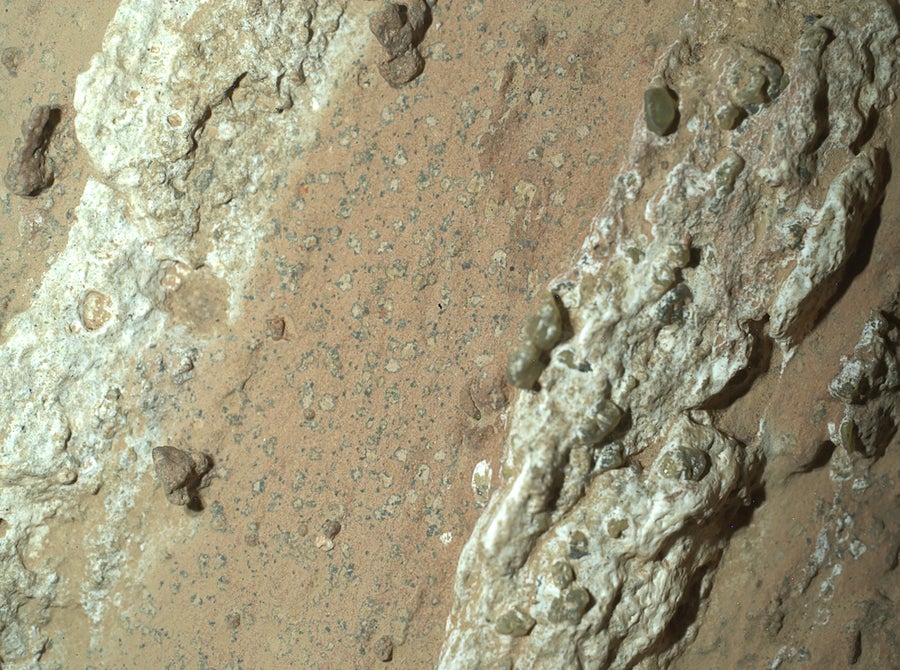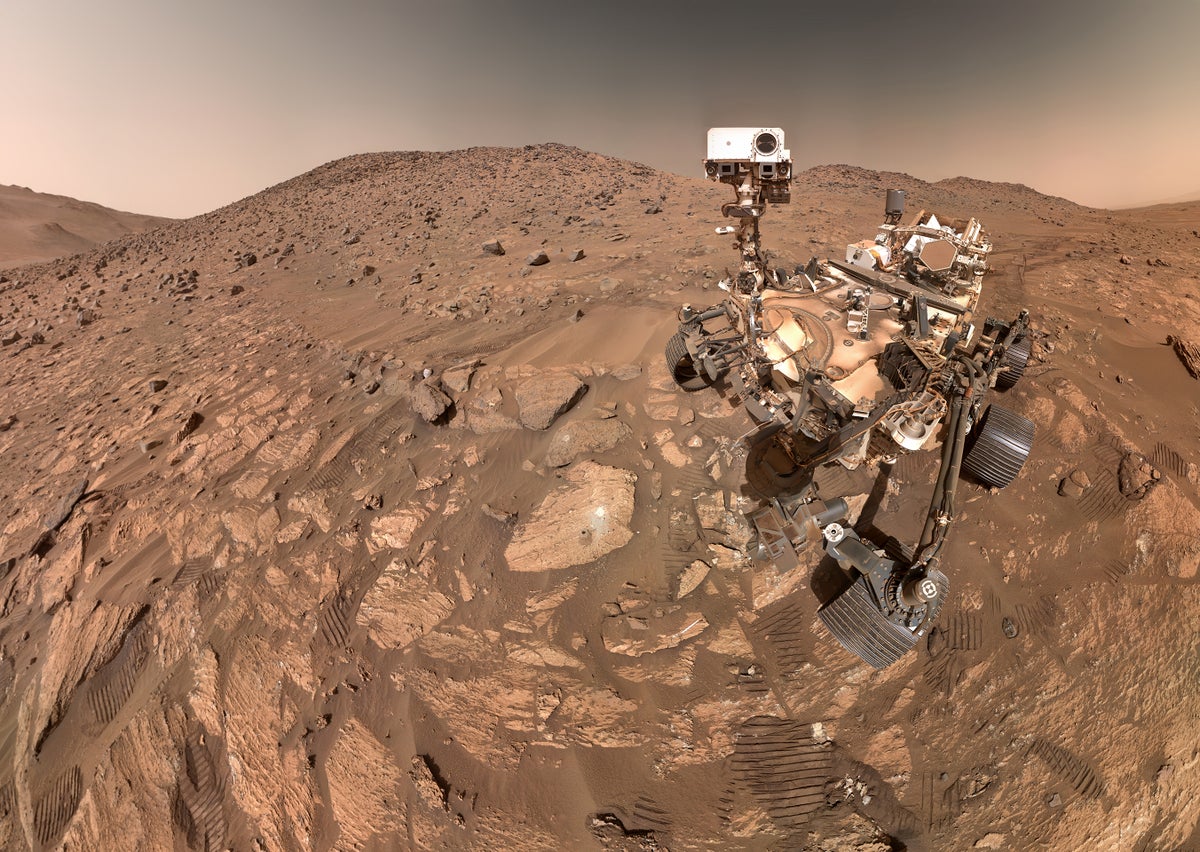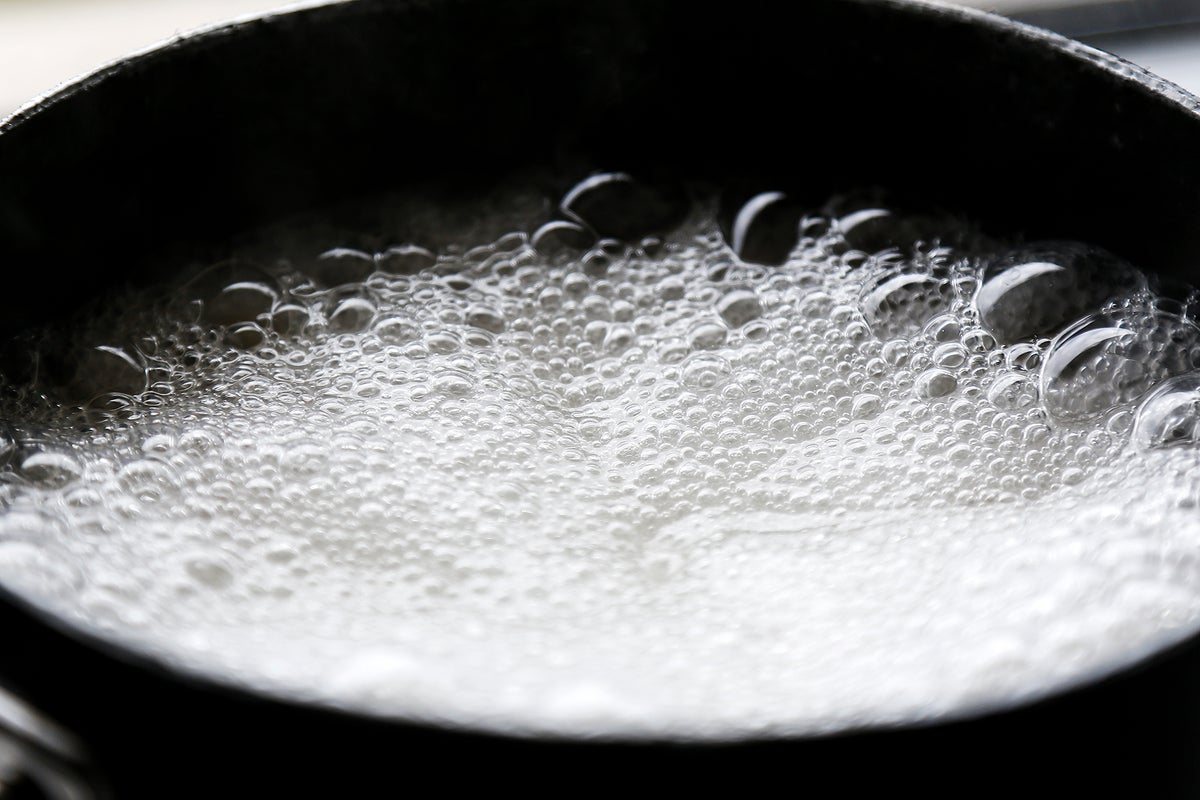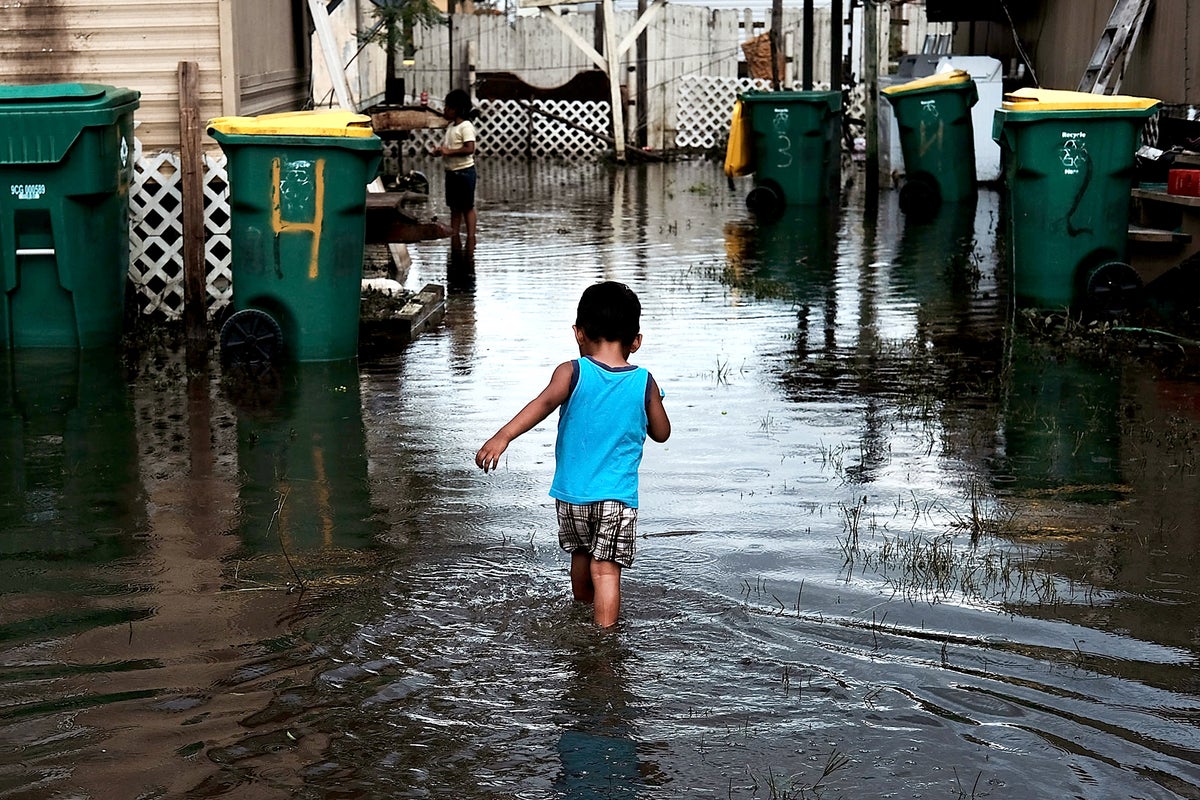In a dry river valley on Mars, NASA’s persevering rover has lastly discovered its trigger: proof of historical alien life—and with it, a lifeline for the house company to convey supplies from the grand planet again to Earth.
This doubtlessly cosmic-shaking proof could appear to be a humble rock, nevertheless it’s in contrast to anything seen earlier than on Mars. Dubbed “Chiava Falls” after a function in Earth’s personal Grand Canyon, the rock seems to be a coffee-table-sized, arrowhead-shaped outcropping of mudstone. However its most notable visible options are its reddish and white stripes – the previous is dark-rimmed, speckled with light-colored spots like leopard spots. The purple shade most likely comes from the iron mineral hematite, says the Perseverance crew. The rover’s research revealed the white spots as veins of calcium sulfate deposited within the water, they usually confirmed that the darkish rims of the curious “leopard spots” contained iron phosphate molecules—a possible meals for hungry floor microbes.
Persistence devices additionally present that rocks comprise natural compounds, the carbon-based molecules which are the constructing blocks of life as we all know it. It is a uncommon discover for the rover, which has been exploring in and across the planet’s Jezero crater since touchdown there in February 2021. (Perseverance’s predecessor, the Curiosity rover, additionally discovered organics throughout its exploration of one other area, Gale Crater.)
About supporting science journalism
If you happen to loved this text, please take into account supporting our award-winning journalism Membership By buying a subscription you’re serving to to make sure the way forward for influential tales concerning the discoveries and concepts that form our world in the present day.
Taken cumulatively, the info from Persistence present that not solely did water circulate by way of Chewava Falls way back however that the mudstone as soon as hosted different situations generally related to microbial life. In hematite-laced sedimentary rocks on Earth, chemical reactions can produce comparable pale, ringed spots—and these reactions launch vitality that may maintain single-celled organisms throughout the rocks.
That persistence was sufficient to power the crew to power the rover to drill some rocks into one among its pattern tubes and ship them to Earth by way of a future mission. The grab-and-go plan, referred to as Mars Pattern Return (MSR), is a collaboration between NASA and the European House Company (ESA). It’s managed by NASA’s Jet Propulsion Laboratory (JPL), which builds and operates the Perseverance. Widespread schedule slips and multibillion-dollar finances overruns, nonetheless, left the venture in limbo. MSR is at the moment present process new plans to discover a quicker, cheaper solution to return the persistence of valuable samples to Earth.
“Chiava Falls is among the most complicated, complicated and doubtlessly necessary rocks investigated by Persistence,” Ken Farley, a Persistence venture scientist on the California Institute of Expertise, mentioned in a July 25 report. NASA assertion Saying the discover. “On the one hand, we now have the primary compelling identification of natural matter, distinct coloured spots indicative of chemical reactions that microbes might use as a supply of vitality, and clear proof that water – important to life – as soon as moved by way of rock. However, we’re unable to find out precisely how the rock was fashioned and to what extent close by rocks have heated Chiava Falls and contributed to those options.
How did the rock get its spots?
The persistence crew noticed the rock in late June and seen that whereas the rover was traversing the northern slopes of the Neretva Valley, a half-kilometer-wide channel carved years in the past by a river that bumped into the Jezero Crater, which was as soon as a big lake and delta system. As Persistence’s preliminary observations of the rock slowly trickled again to Earth as radio waves, the more and more bewildered crew started a frantic, round the clock scramble to gather as a lot knowledge as potential — and a vital pattern — earlier than the rover moved away. to different premeditated objectives.

Captured by the Perseverance rover on July 18, 2024, this close-up picture of the “Chiava Falls” Martian rock reveals a number of fascinating options. Bands of reddish, iron-rich materials containing “leopard spot” mineral deposits run inside white veins of calcium sulfate interbedded with inexperienced olivine crystals. Scientists have but to completely clarify this unusual mixture of minerals, which can be proof of historical Martian microbes.
Chiava Falls could have fashioned initially from cemented muck on the riverbed, the place calcium-sulfate veins later amassed as mineral-rich fluids percolated by way of rock fissures. However this easy scene is difficult by one thing else persistently glimpsed within the veins of the rock: tiny crystals of olivine, a inexperienced mineral that types from magma. The presence of minerals within the veins, the rover’s scientists say, might imply that olivine and sulfate alike have been transported into the rock by an surprising scorching circulate of water—and that the leopard spots have been fashioned totally by inorganic high-temperature chemical reactions.
“The rocks above and to the north of Chiava Falls, recognized because the ‘margin unit,’ are very distinct and wealthy in olivine,” mentioned Katie Stack Morgan, JPL’s deputy venture scientist for persistence. could also be associated to.”
Earlier observations from Persistence revealed that the uncovered bedrock downslope of Chiawa Falls may be very comparable in construction, even with small, darkish clusters of organics and minerals, Stack Morgan mentioned. However no different rock but examined has proven distinctive leopard spots.
Regardless of this obscure origin, the spots at Chiava Falls undoubtedly bear a wierd resemblance to constructions that, when present in rocks from deep within the earth, are usually thought-about indicators of life—so-called biosignatures. Technically referred to as “discount spheroids,” these options sometimes type from natural matter in sedimentary rocks that’s oxidized, or rusted, iron-rich, which supplies such rocks a wealthy shade. Flowing water can facilitate “redox” reactions between natural matter and surrounding rocks, lowering (taking electrons from) oxidized iron and bleaching it. Microbes in rocks can improve and piggyback on this course of through the use of the circulate of nutrient electrons to gas their metabolism. The top result’s a pale sphere of iron with different hint metals and, doubtlessly, microbial microfossils—an oasis buried deep within the soil.
“Remarkably, these (discount spheres) are most likely the one biosignatures for floor microbial life that you could see together with your eyes or with our rover’s cameras,” mentioned David Flannery, an astrobiologist on the College of Queensland in Australia and a member of the persistence science crew. of know-how. However since these constructions may also come up from purely inorganic processes, they can’t represent iron-clad proof for previous life—particularly when they’re being studied remotely by a robotic on an alien world positioned thousands and thousands of kilometers away. Even on Earth, Flannery says, “there’s surprisingly little work on (lowering spheres), as a result of these items are so onerous to grasp.”
convey dwelling
Though Chiava Falls is nowhere close to proof of life on Mars, scientists are keen to review it in additional element, as it’s the next-best factor: essentially the most promising rock for doubtlessly fossilized Martian discoveries.
“It is undoubtedly thrilling,” mentioned Caleb Scharf, senior astrophysicist at NASA’s Ames Analysis Middle, who shouldn’t be a part of the persistence crew. “The invention of Chiava Falls makes an excellent argument for returning samples from Mars or sending new gadgets and devices that increase how we will interrogate proof on Mars.”
“We zapped that rock with lasers and X-rays and imaged it actually day and night time from each angle possible,” Farley mentioned in a current NASA assertion. “Scientifically, persistence has nothing to supply. To totally perceive what actually occurred in that Martian river valley within the Jezero crater billions of years in the past, we need to convey the pattern of the Chiava Falls again to Earth, in order that it may be studied with the highly effective devices obtainable within the laboratory.”
These highly effective devices will embrace heavy, delicate electron microscopes and mass spectrometers, which aren’t appropriate for packing on an interplanetary robotic, says Stack Morgan. Such instruments can look at samples for a big selection of natural signatures and pin down particulars such because the age of the darkish rim of leopard spots, the time the rock interacted with water, and even the temperature at which a few of its minerals fashioned. Maybe most significantly, due diligence is at the moment muted on the character of natural compounds in Chiava Falls, Earth-bound instruments can reveal the sort and complexity of molecules in that materials to find out if it has a organic origin.
Nevertheless, first, NASA and ESA want to determine how MSR could make it dwelling.
#NASAs #persistence #rover #found #rock #alien #microfossils



